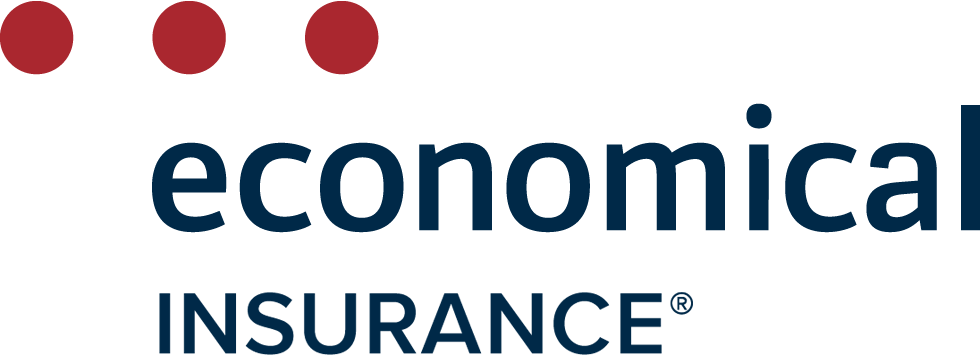
Get Cheap Home Insurance Quotes in Alberta
Save an average of 30%* on Alberta home insurance when you compare quotes on InsuranceHotline.com.
How to get the cheapest home insurance quote
Get multiple home insurance quotes in the time it takes to get just one
1. Enter Postal Code
Start with your postal code!

2. Enter Your Information
Answer a few quick questions about yourself and your home.

3. Compare Your Quotes
Compare home insurance coverage and quotes from 50+ insurance companies.
We've got hundreds of 5 star reviews
2,245 reviews on TrustPilot. See some of the reviews here.
Curtis
Robert Clarkson
Vincenzina Perri
Keith
Dev
Georgia
Shirley Munro
Hoang Tran
Michael Benninger
Gene
D on
Robert
Remonia Thompson
Rich
Luis
Cedric Habbib
Brad Spencer
What is home insurance and who needs it?
Home insurance is an insurance product designed to protect your home, your family and your possessions.
If you have a mortgage, the lender will require you take out a home insurance policy to protect their investment. Even if you dont have a mortgage, home insurance should be considered an essential purchase for the protection it gives you.
Whether you currently own a home or condo, or if you rent a property and require tenant's insurance, our comparative search service can help save you money and find you the right coverage for your needs. Join the more than 1 million Canadians who have used our service to save on their home insurance.
How does home insurance work?
The homeowner pays an annual premium to the insurer (typically split into 12 monthly payments), and the insurance company provides financial protection when the owner needs to make a claim.
This protection is twofold. Firstly, it helps cover the cost of repairs to the home if the damage is caused by an insured peril, and will help pay for repairs (or replacements) if the homeowner’s possessions are damaged, lost or stolen. Secondly, it protects the owner from costs associated with legal action in the event that someone is physically hurt on the property.
How is the cost of home insurance calculated?
When determining how much you must pay, insurance companies assess the replacement value of your home and possessions, as well as the likelihood that you’ll make a claim. For example, owners with no claims history, living in a newly built house, next to a fire station, would be deemed low risk and cheaper premiums should reflect this.
Home insurance rates depend on multiple factors and every company will assess your risk differently. The best way to save on insurance is by shopping around. Compare quotes from Canadas most trusted providers and find a great deal today.
Frequently asked questions about home insurance in Canada
Have more questions about home insurance in Canada? We got them all answered here...
Who offers the best home insurance coverage?
This depends on the type of coverage you need and how much you are willing to pay. No single company can claim to offer the best coverage without first assessing your property and understanding your needs. InsuranceHotline.com can show you multiple rates and coverages in one convenient place, saving you time and money when looking for the best deal. Compare home insurance coverages today.
Who has the cheapest home insurance policy?
No one company offers the cheapest home insurance rates. The insurance company willing to offer the cheapest rate will not be the same for everyone, as your coverage costs depend on your individual circumstances. One thing is for sure, different insurance companies offer different rates for the same coverage, so use InsuranceHotline.com to compare quotes. Last year, we helped Canadians save an average of $300 on their home insurance.
Are mortgage insurance and homeowners insurance the same?
Usually, when you put less than 20% downpayment on a home, the lending institution will require you to take out mortgage lending insurance, which will pay the remainder of your debt should something happen to you, and you are unable to pay. It’s protection for the lender – not you.
That’s quite different from homeowner insurance, which protects you and your possessions from loss or legal action. The bank has no connection to that except for the fact that you will be required to have mortgage insurance to receive financing from most institutions.
Can I get a mortgage without home insurance?
No mortgage lender in Canada will approve a loan without first ensuring you have home insurance. If you were to default on your mortgage, the lender could take possession of the property. Your home insurance is a way of protecting their investment.
When should I file a home insurance claim?
Before rushing to contact your insurance company and file a claim, you’ll want to consider a few things.
1) Is it covered?
Make sure you are familiar with your home insurance policy and understand your coverage before you file a claim. This will help you understand what exactly is covered, and for how much.
2) How much would it cost you to fix it yourself?
If the cost to repair the damage is less than your deductible, or will only cost you slightly more, it is wise to forego an insurance claim. The more claims you make, the higher your future premiums will be, so asking your insurance provider to reimburse you for every little thing is short sighted. Sure, a claim could save you a few dollars this month, but keeping your premiums low will save you more money in the end.
Generally, as long as the claim isn’t too serious and will cost you less than your deductible, you are better off keeping insurance out of it. However, if during the repair process you make significant improvements, like replacing a damaged countertop with expensive marble, you should let your insurance know so they can update your coverage.
3) The amount of damage
If your home has sustained significant and costly damage, you should make an insurance claim. The same is true if your home has been burgled and valuable items have been taken.
The financial protection offered by your home insurance company is exactly why you took out home insurance in the first place. You will still have to pay the deductible, but use your home insurance to save you from taking a real financial hit when repairing your home or replacing your things.
4) Liability
If you are facing liability-related legal fees, send a copy of the lawsuit notice to your insurer immediately. They have to defend you, subject to the terms laid out in your policy.
Don’t try to take matters into your own hands. There is no such thing as a cheap lawsuit and you will need the liability insurance to help pay for legal representation, even if you are ultimately cleared of any wrongdoing.
Home insurance rate changes
As indicated in a recent report by The Applied Rating Index, average premiums for personal property insurance have increased across Canada.
Ontario, Quebec and the Atlantic Provinces have all seen big jumps in the last 12 months.
Average change in personal property insurance premium rate compared to the same quarter last year
| Location | Q1 2018 | Q2 2018 | Q3 2018 | Q4 2018 | Q1 2019 | Q2 2019 | Q3 2019 | Q4 2019 | Q1 2020 |
|---|---|---|---|---|---|---|---|---|---|
| Alberta | 7.90% | 5.70% | 4.40% | 12.10% | 3.20% | 4.50% | 9.80% | 3.20% | 6.10% |
| Atlantic Provinces | 5.50% | 5.60% | 7.40% | 9.20% | 9.80% | 9.10% | 10.50% | 12.80% | 11.60% |
| Ontario | 1.60% | 4.20% | 4.50% | 5.10% | 7.40% | 8.70% | 11.20% | 12.00% | 10.40% |
| Quebec | 0.10% | -2.20% | -0.50% | 1.60% | 6.70% | 12.20% | 21.30% | 23.40% | 24.10% |
| British Columbia | -0.70% | -1.30% | 3.50% | 11.25% | 23.80% | 24.60% | 25.30% | 6.60% | -3.70% |
| Saskatchewan and Manitoba | 1.40% | 0.20% | 2.70% | 5.10% | 6.10% | 9.10% | 10.00% | 10.20% | 9.50% |
| Canada | 2.90% | 2.70% | 3.50% | 5.70% | 7.70% | 10.10% | 13.60% | 11.00% | 8.80% |
10 Factors that can affect your home insurance premium
Insurance companies take a number of factors into consideration when determining your home insurance premium. If the data suggests you are likely to make a claim, you may be deemed high risk and consequently face a higher premium. Conversely, if you are considered low-risk, you will receive a cheaper premium.
To make this determination, insurance companies consider the following:
1. Where you live.
Home insurance providers use detailed local statistics to track the number and severity of insurance claims. If your neighbourhood has a high number of burglaries, vandalism, house fires, or anything else that might potentially lead to a claim, you can expect a higher home insurance premium.
2. Heat source.
How you heat your home can have a big impact on your home insurance rates, as some heat sources are inherently riskier than others.
- Radiators are considered safe by insurers, as they rely on hot water rather than combustible substances to distribute the heat throughout your home.
- Wood stoves are at the other end of the spectrum. If they are not maintained properly, they can cause carbon monoxide poisoning and are a common source of house fires.
3. Type of electrical distribution.
In Canadian homes, especially those built before the 1950s, knob-and-tube wiring is commonplace, but insurance companies are increasingly reluctant to provide coverage to any house that still has it. Over the years, either through tampering or simple deterioration, this technology has become a fire risk.
Most Canadian insurers will give you a few months to remove and replace it with insulated wiring. Once this work is complete and a licensed electrical contractor has approved it, finding an affordable home insurance rate will be much easier.
4. Pipes and plumbing.
As with electrical, the age of your home is a good indicator as to whether or not plumbing will be an issue. Older homes, built before the mid-1950s, used lead piping. This type of plumbing has eroded over time, making it more likely to crack, leak and lead to a home insurance claim. Insurers will reward plastic or copper pipes, more modern and stable technologies, with a lower home insurance rate.
5. Age of roof.
The roof over your head does much more than keep you dry. Modern roofs are surprisingly complex; the angle of the pitch has been perfected to ensure the best possible water run-off, the materials used for tiles is lighter and more durable than ever, and the introduction of fascia and soffits means the roof over your head allows for proper ventilation, decreasing the likelihood of trapped water and mould. Considering this, insurers may provide a cheaper quote to a house with a roof that is less than 20 years old.
6. Primary use of your home.
If you are planning to rent out your basement, allow people to book your spare room on Airbnb, or even use your house as a home office, you must inform your insurance company to ensure you’re covered for these usages. Any peripheral use of your home (aside from normal living), will increase your premium as it increases your coverage.
7. Your claims history.
Past claims are the best predictor of your future insurance needs. If you have a history of making insurance claims, insurance companies will consider you high risk and will set a higher premium. A no claims history, especially if you have had home insurance before, will reassure insurers that you are deserving of a lower rate.
8. Proximity to fire hydrant and fire station.
If a fire does break out in your home, insurers want reassurance that the local fire service will be able to put it out quickly. If you live in a city, your proximity to a fire station is unlikely to make a dramatic difference to your insurance, as all properties should be accessible. However, if you live in a remote area, especially if there is no water source nearby, a fire could do a lot of damage before help arrives, and as a result, you will face a higher insurance premium.
9. Alarm system.
An alarm system, especially one that is monitored by a home security service, will act as a deterrent to thieves and will help lower your home insurance costs. The same is true if you install a monitored security system.
10. Value of your home (replacement cost to rebuild)
The largest home insurance claims come from catastrophic disasters, whereby the whole property has to be rebuilt from scratch.
For this reason, the square footage of your home, and the construction materials used to build it, are hugely influential when it comes to determining your insurance. The larger and more valuable your home, the more it will cost to rebuild, and the higher your premium will be.
Why use InsuranceHotline.com to compare home insurance quotes online?
There are lots of reasons to compare!
SAVE MONEY
On average, shoppers save $300 on home insurance comparing quotes with us.
SAVE TIME
In just a few minutes you can compare quotes from more than 50 insurers.
IT'S FREE
There's no catch or fine print; our service is absolutely free for you to use.
IT'S EASY AND QUICK
You're just a few quick questions away from your custom quote.
YOUR INFORMATION IS SAFE
Your details are secure. Look for a locked padlock in your browser as well as https.
WE RESPECT YOUR PRIVACY
Your privacy is important to us. We never share your details without your consent.
Tips on getting the cheapest home insurance
Follow these tips to ensure you’re getting the cheapest home insurance rate:
- Shop around – Property insurance rates change frequently. They usually increase, but if your neighbourhood has seen a reduction in crime, or you have made improvements to your home, insurers might be willing to offer a lower premium. The company offering the cheapest rate this year may not be the cheapest when it comes time to renew your policy next year. Take advantage of the best available rates by shopping around before every renewal.
- Increase your deductible – Most home insurance policies default to a $1,000 deductible, which is the amount you pay in the event of a claim. If you are willing to take on a larger share of the financial risk, increase the deductible and pay a lower monthly premium.
- Pay your premiums annually – Ask your insurer about paying your home insurance in one annual lump sum, rather than in monthly installments. Many companies are willing to offer a reduced rate for this.
- Multi-line discount - Bundle your home insurance together with your car insurance and you could save up to 15% on each! The insurance company is rewarding you for using more of their products.
- Safeguard your home – Taking steps to safeguard the physical structure of your home, (e.g. replacing the roof, modernizing the heating system, adding a sump pump, installing an alarm system) reduce the likelihood of you needing to make an insurance claim. Tell your insurer as soon as these improvements occur, and your monthly payments could go down immediately.
- Lifestyle changes – Quitting smoking? Mortgage paid off? Getting married? These are just some of the factors that could help reduce your home insurance premium. As with changes to the physical structure of your home, tell your insurer as soon as these things happen to benefit from immediate savings.
- Review your policy annually - Check your coverage every year. If you no longer need certain protection, removing it from your policy is a way to reduce costs.
- Ask about discounts – Ask your provider if they offer any discounts or incentives to their customers and see if you qualify. For example, special rates are sometimes offered to alumni of local universities.
Why home insurance premiums in Canada keep rising
The reason home insurance premiums in Canada keep rising is the ever increasing number (and cost) of claims. With data taken from the Insurance Bureau of Canada's factbook, here is how personal property net written premiums compare to personal property claims over the last 20+ years:
| Year | Personal Property (Net Written Premiums in $000,000) | Personal Property (Net Claims in $000,000) |
|---|---|---|
| 2018 | 12,012 | 7,250 |
| 2017 | 11,226 | 6,533 |
| 2016 | 10,663 | 6,253 |
| 2015 | 10,187 | 5,489 |
| 2014 | 9,971 | 6,045 |
| 2013 | 9,024 | 6,161 |
| 2012 | 8,565 | 5,013 |
| 2011 | 8,192 | 5,336 |
| 2010 | 7,598 | 4,566 |
| 2009 | 7,013 | 5,071 |
| 2008 | 6,495 | 4,720 |
| 2007 | 6,033 | 3,842 |
| 2006 | 5,621 | 3,556 |
| 2005 | 5,315 | 3,570 |
| 2004 | 5,079 | 2,921 |
| 2003 | 4,452 | 2,574 |
| 2002 | 3,971 | 2,352 |
| 2001 | 3,481 | 2,316 |
| 2000 | 3,429 | 2,286 |
| 1999 | 3,293 | 2,152 |
| 1998 | 3,383 | 2,523 |
| 1997 | 3,281 | 2,112 |
| 1996 | 3,246 | 2,301 |
| 1995 | 3,163 | 2,003 |
| 1994 | 3,042 | 1,955 |
Why home insurance premiums in Canada keep rising
Catastrophic insured losses in Canada
Insured losses resulting from a disaster are classified "catastrophic" when they total $25 million or more. Unfortunately, owing primarily to climate change, catastrophic disasters in Canada have increased dramatically over the last 35 years (IBC factbook - 2018):
| 5-Year Period | Loss (plus loss adjustment expenses in 2017 dollars) |
|---|---|
| 2013-2017 | $11.4 billion |
| 2008-2013 | $5.7 billion |
| 2003-2008 | $2.6 billion |
| 1998-2003 | $3.7 billion |
| 1993-1998 | $1.8 billion |
| 1988-1993 | $1.1 billion |
| 1983-1988 | $0.9 billion |
Increasingly frequent catastrophic events impact premiums because fewer companies are willing to provide property insurance, especially if you live in an area which is susceptible to flooding, earthquakes or forest fires. A lack of supply coupled with increasing demand is one of the primary reasons home insurance premiums continue to increase, and why you should use InsuranceHotline.com to compare quotes and find the best deal.
*Shoppers in Alberta who obtained a quote on InsuranceHotline.com from January to December 2021 saved an average of 30%. The average savings percentage represents the difference between the shoppers’ average lowest quoted premium and the average of the second and third lowest quoted premiums generated by InsuranceHotline.com.











